
Attracting bees, butterflies and other beneficial insects to your garden couldn’t come at a better time than now, at this particular point in history.
With the decline in insect species worldwide, in part due to harmful growing practices and deforestation, it’s up to us, the diligent backyard gardeners to do something.
As long as we continue to plant flowers, herbs and garden crops, there will always be hope. With that hope, there will always be bugs. More insects than we could ever count.
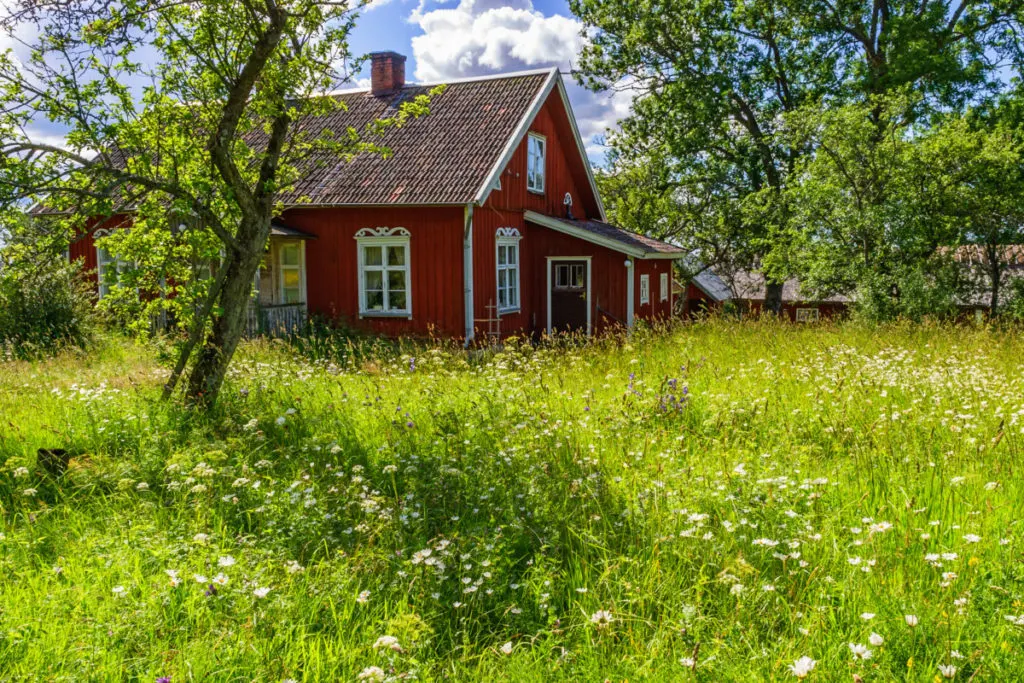
Your backyard can be a haven for creatures big and small, depending on the size of your plot.
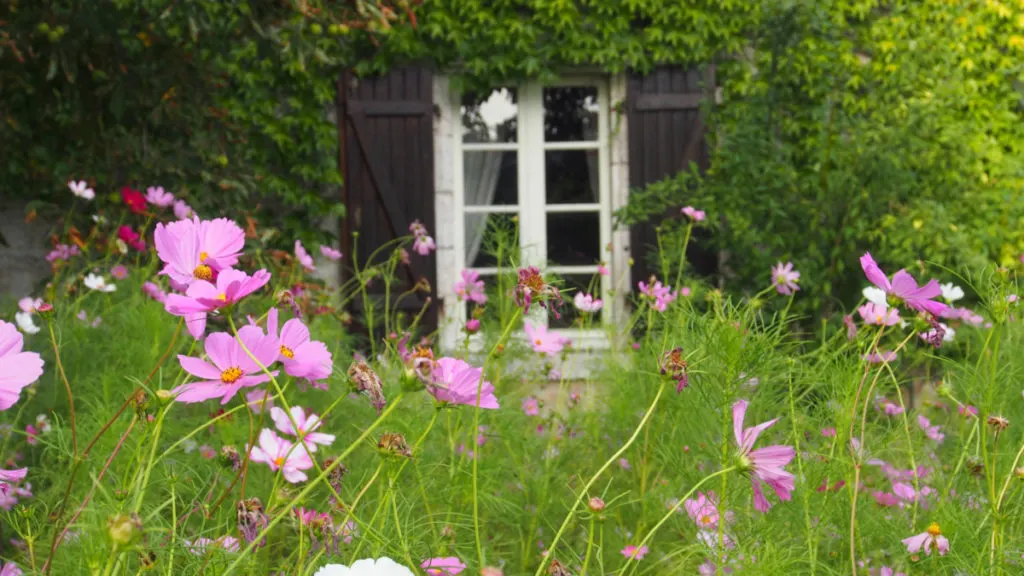
For most of us, this is going to be small-scale. But, even the tiniest garden can make a change in an insect population.
All you have to do is plant the right flowers to see the rewarding results for yourself.
The more diverse plants you grow in your garden, the more distinctive and varied the winged, shelled and multiple-legged creatures who come to visit will be.
Rewilding your garden and backyard
Attracting bugs, bees and bats is about more than planting the right foods to feed them.
It’s also about rewilding.
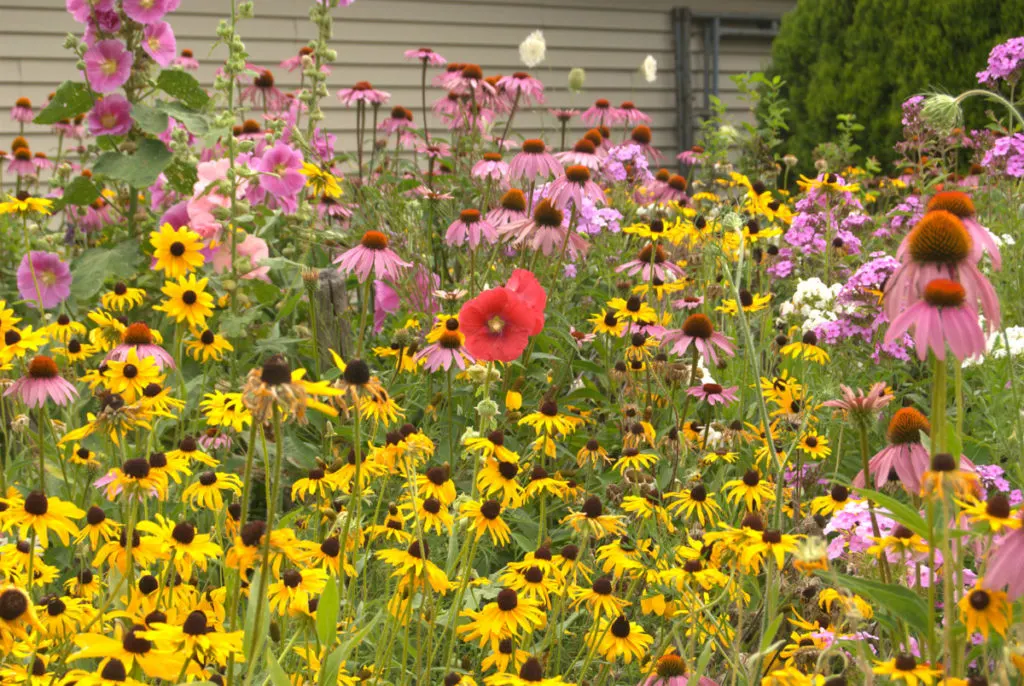
Not in the sense of allowing foxes, wolves and bears to roam the neighborhood, but in doing your part to allow nature to move one step closer to your home.
Attracting birds with colorful trees and shrubs – which you can all enjoy together.
Mowing your yard less often, to allow dandelions and other wildflowers to fully blossom.
Turning your lawn into a wildflower meadow to provide a habitat for pollinators as you improve the soil’s health. At the same time preventing erosion and improving water quality as you eliminate all chemicals.
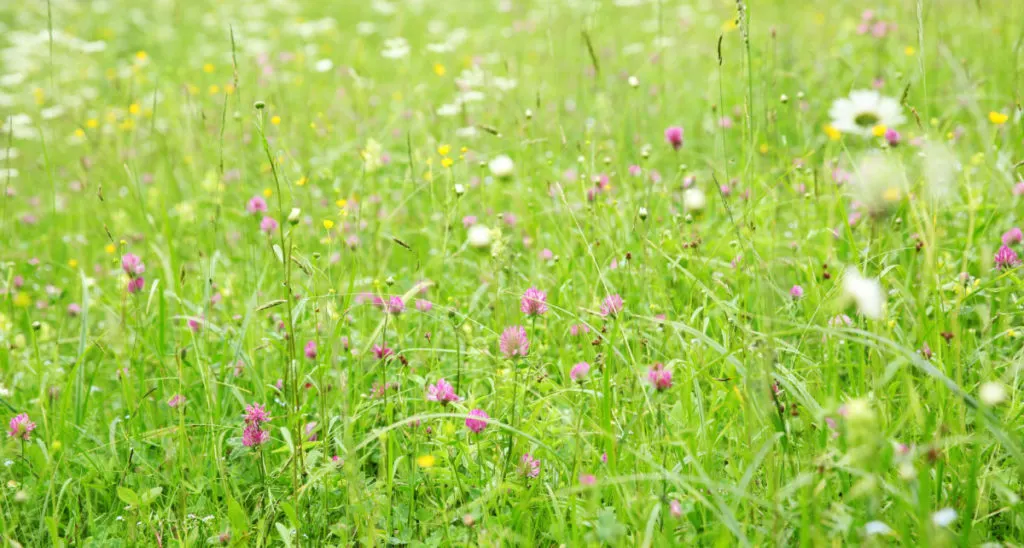
It sounds so idyllic, almost too good to be true.
Yet, when we take a step back and put nature first, it turns out there are many things we can do to encourage the health, vitality and wealth of the planet.
It all starts with catering to the bees.
20 Plants to Attract Bees
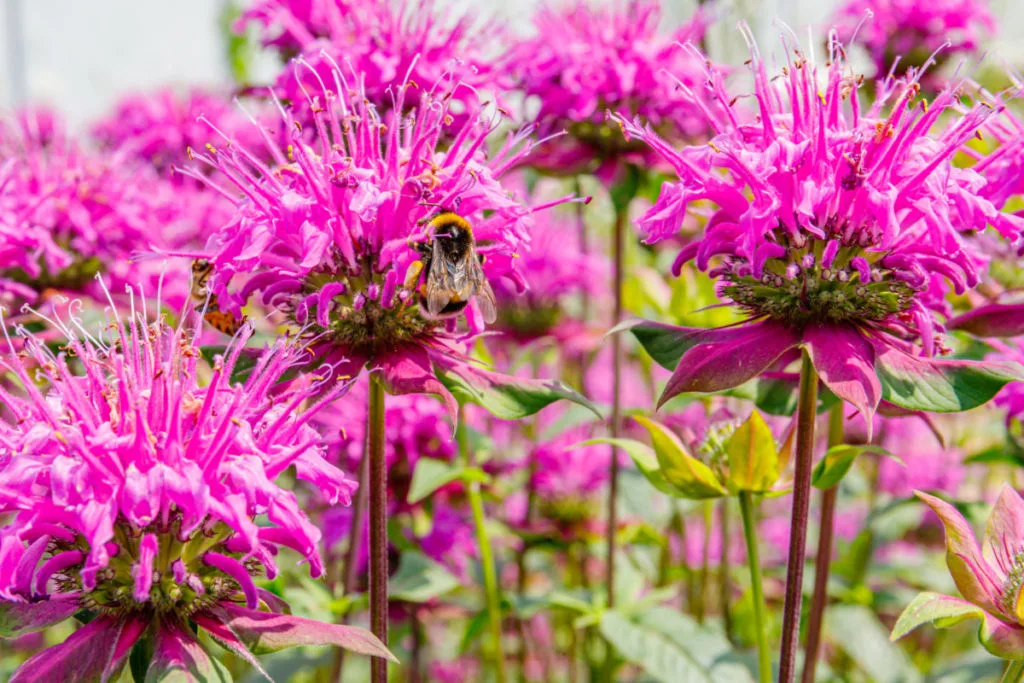
Could we survive without bees?
Is it possible that they could survive without us?
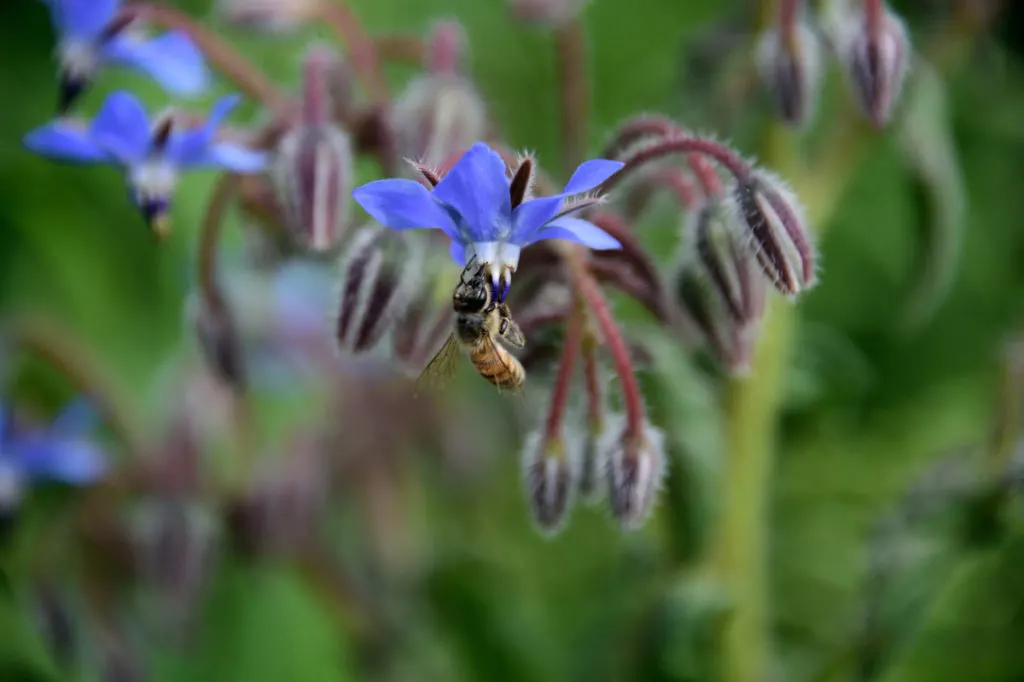
Both are good questions to think about as you ponder how to fit some of the following plants in your backyard – or front yard – garden:
- asters (Aster sp.)
- bee balm (Monarda sp.)
- black-eyed Susan (Rudbeckia hirta)
- borage (Borago officinalis)
- chives (Allium schoenoprasum)
- goldenrod (Solidago sp.)
- lavender (Lavandula sp.)
- liatris (Liatris spicata)
- marigold (Tagetes sp.)
- mint (Mentha sp.)
- nasturtium (Tropaeolum majus)
- peony (Paeonia sp.)
- phlox (Phlox paniculata)
- poppies, California – (Eschscholzia californica)
- roses (Rosa sp.)
- sage (Salvia sp.)
- sunflower (Helianthus)
- thyme (Thymus vulgaris)
- verbena (Verbena bonariensis)
- zinnia (Zinnia elegans)
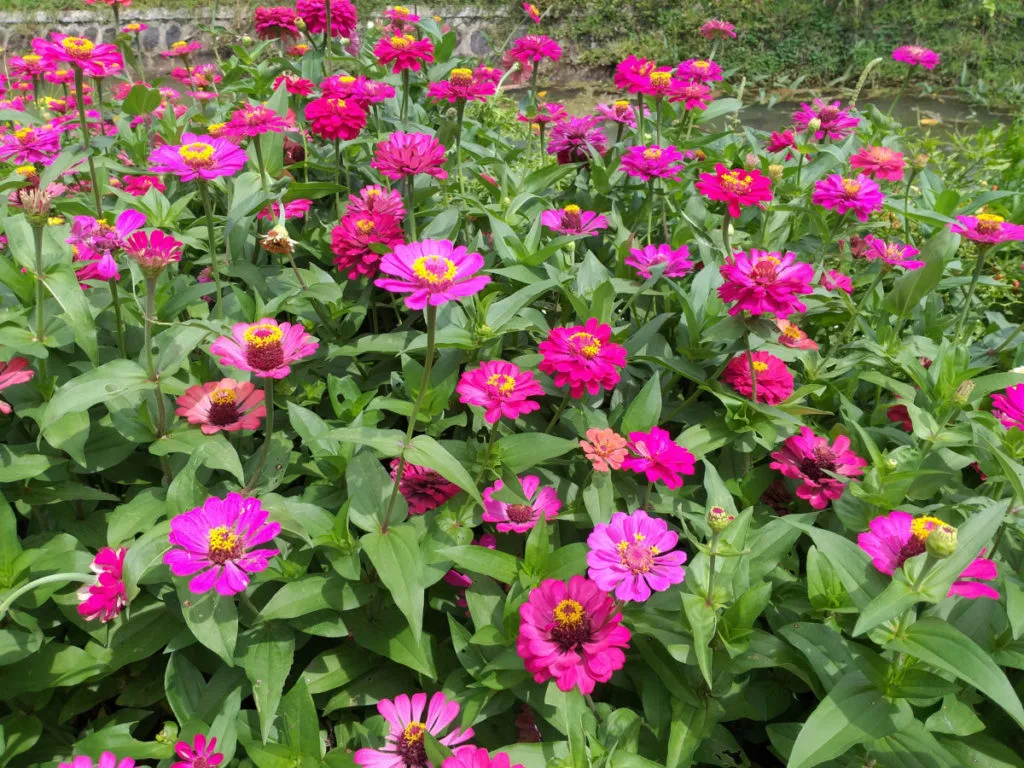
Bees, like most insects, are buzzing nervously under threats mainly caused by humans – urbanization, loss of habitat, heavy chemical use and wildly shifting weather patterns caused by climate change.
We’ve all heard at some point about honeybees and the colony collapse disorder. Have you ever stopped to ask yourself, “Is there anything I can do to help?”
The population of honeybees is declining for several reasons:
- parasites
- disease (weakened immune systems)
- poor nutrition
- chemicals in their food supply
One of the easiest ways to cater to bees is to eliminate the chemicals we would otherwise use in our own yards. This rings true especially when it comes to lawn care.
The second thing we can do to nurture bees is to plant a myriad of plants they adore.
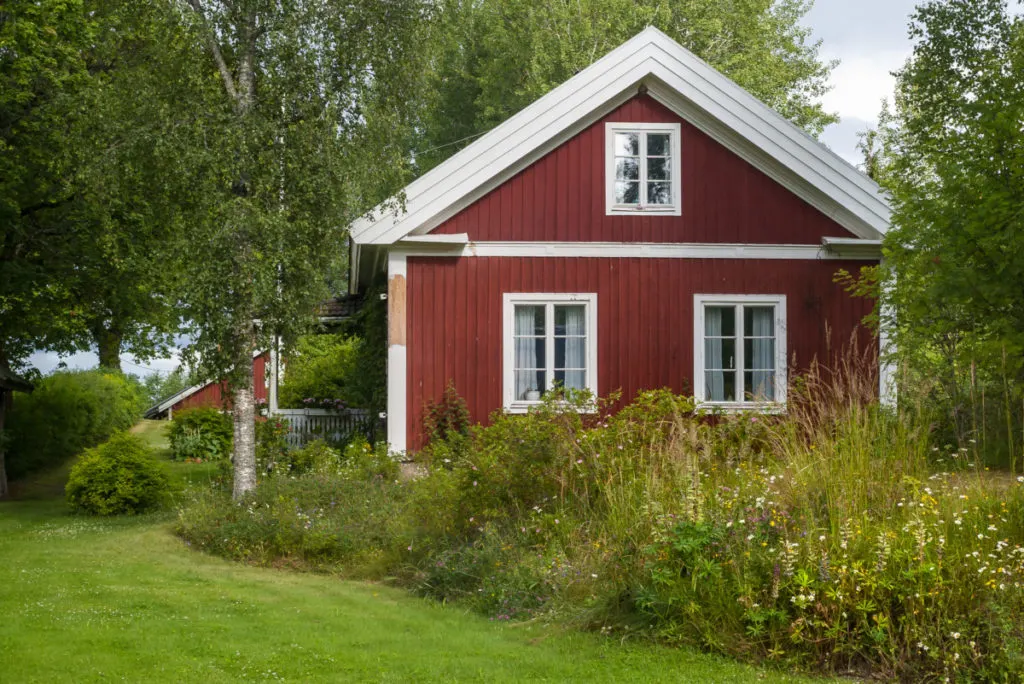
Contrary to popular belief, that we need to save the dandelions for the bees, this simply isn’t true. Let’s bust this garden myth here and now.
Bees feed on the pollen of more than just dandelions. In fact, tree pollen is far more important as a first food source for bees, more nutritious too.
Dandelions are rather a “snack food” for bees.
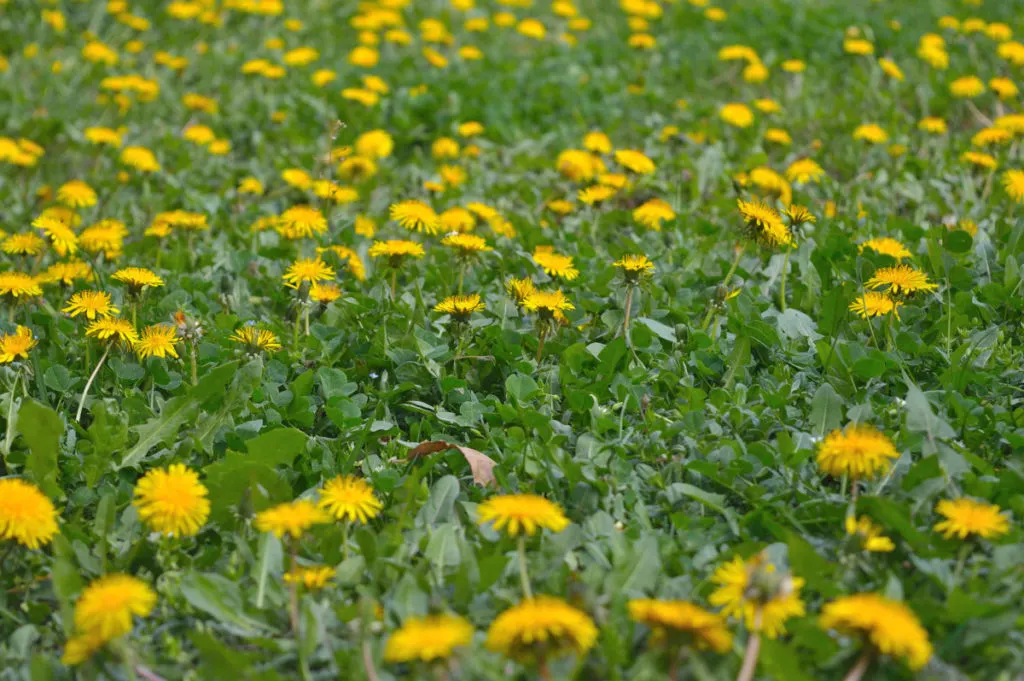
They help to fill in the gap between collecting other sources of pollen and nectar, which might be abundant earlier, or later, in the day.
And an alluring field/backyard full of dandelions may even distract the bees. In that case, they may choose convenience of mass over flavor and quality nutrition. Even passing up an orchard to find a yellow haven.
If ever, you have wondered what a bee’s first food of the season is, go out there and do some of your own research. You may be surprised at what you find.
Do Your Part to Help Bees Thrive
Since bees pollinate 90% of our food worldwide, doesn’t it make perfect sense to feed them what they need?
After all, “we are what we eat eat”.
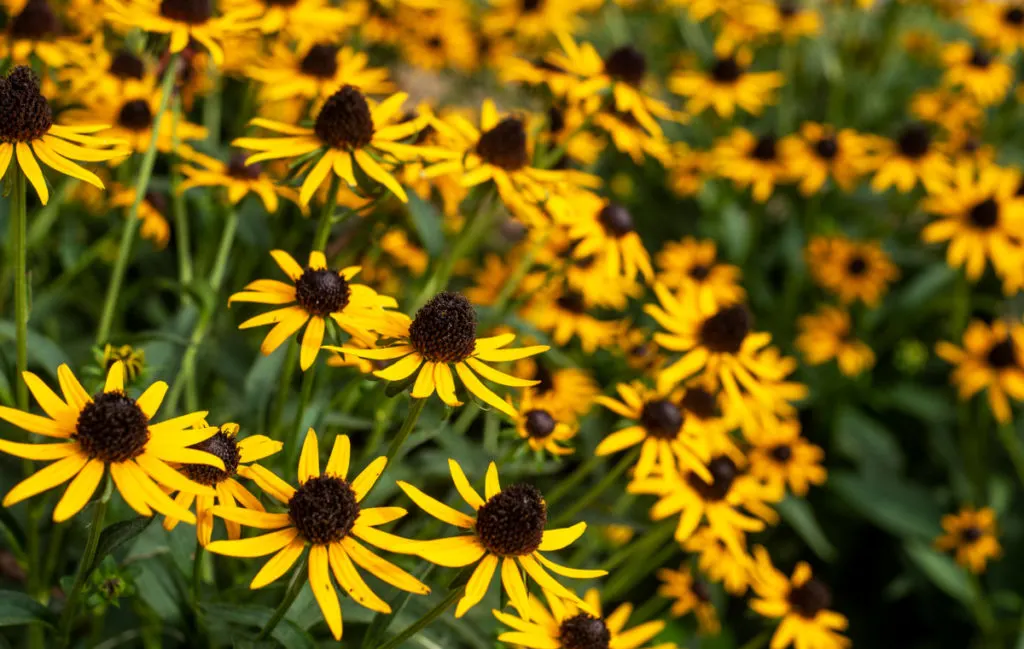
Let that sink in for a few moments as you begin to prioritize your garden and your diet. Think about how your backyard might become an ark. Then get out there and plant some native plants to feed the bees.
Bees are among the most crucial pollinators that we can attract to our gardens. Yet, we needn’t stop there.
Let’s find out how to bring more butterflies and beneficial insects into our gardens as well.
Related reading: 13 Practical Ways You Can Help Pollinators – With Advice From a Distinguished Entomologist
20 Flowers and Plants to Attract Butterflies
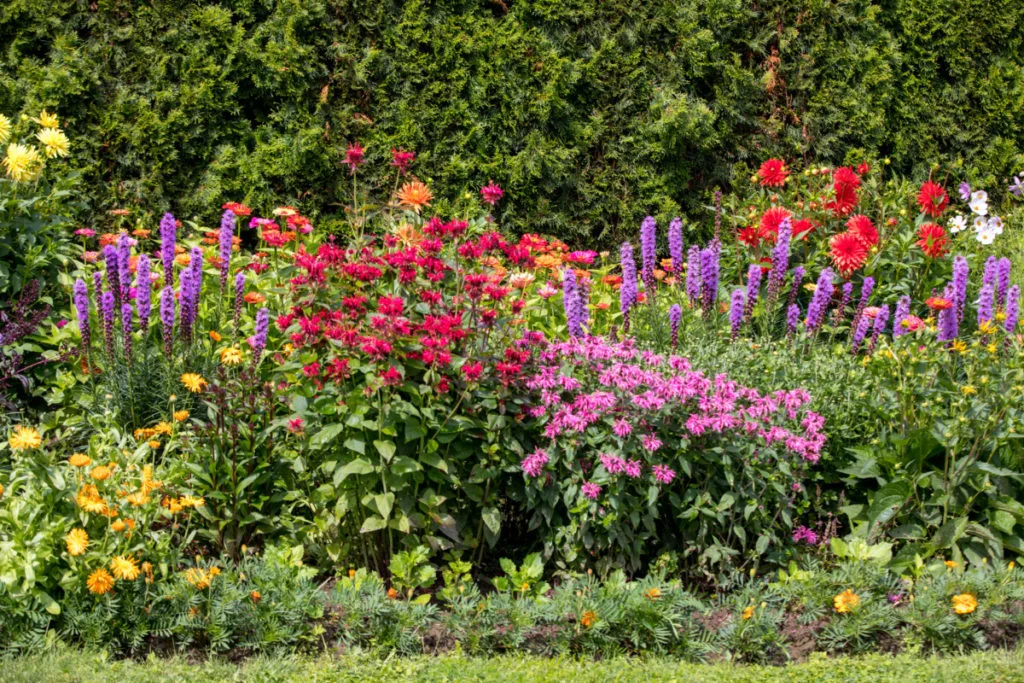
You may not know it, yet, but butterfly bushes are not the best way to attract butterflies.
It may grow quickly as it produces a bounty of irresistible flowers, yet it can be considered an invasive species depending on where you live.
There are plenty of other plants to attract butterflies:
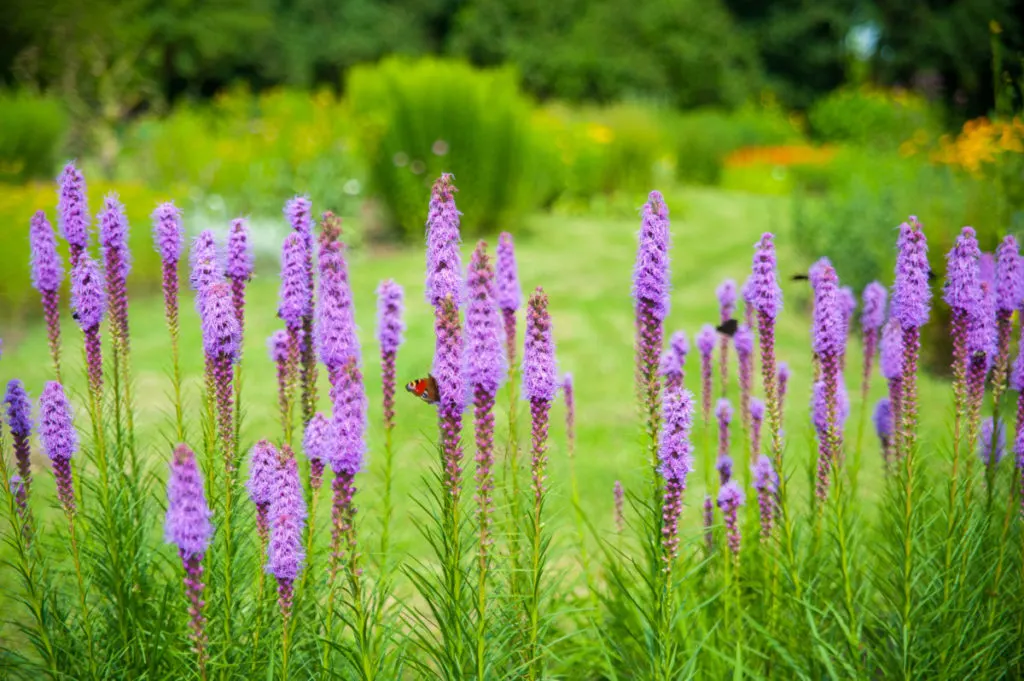
- angelica (Angelica archangelica)
- asters (Aster sp.)
- baptisia (Baptisia sp.)
- beebalm (Monarda sp.)
- black-eyed Susan (Rudbeckia)
- coneflower (Echinacea angustifolia)
- daylilies (Hemerocallis sp.)
- Joe-Pye weed (Eutrochium purpureum)
- liatris – blazing star (Liatris sp.)
- milkweed (Asclepias)
- mints (Mentha sp.)
- oxeye daisy (Leucanthemum vulgare)
- perennial snapdragons (Antirrhinum sp.)
- phlox (Phlox paniculata)
- rushes (Juncus effusus)
- salvia/sage (Salvia sp.)
- stonecrop (Sedum sp.)
- sunflower (Helianthus)
- verbena (Verbena sp.)
- yarrow (Achillea millefolium)
And the list could go on and on.
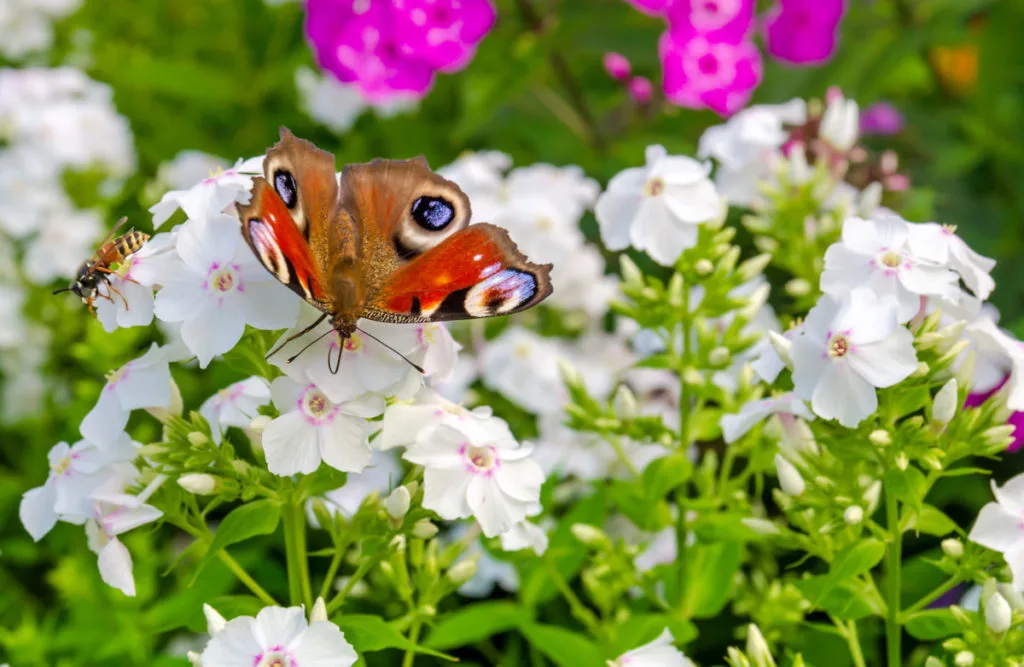
If you’re keen on attracting the most beautiful butterflies possible, perhaps this is the year you create a butterfly garden in your backyard?
As with enticing other creatures to your haven, you’ll want to be sure to put out a shallow source of water. This way they can find everything they need for survival, all in one place.
What kind of butterflies can you attract to your garden?
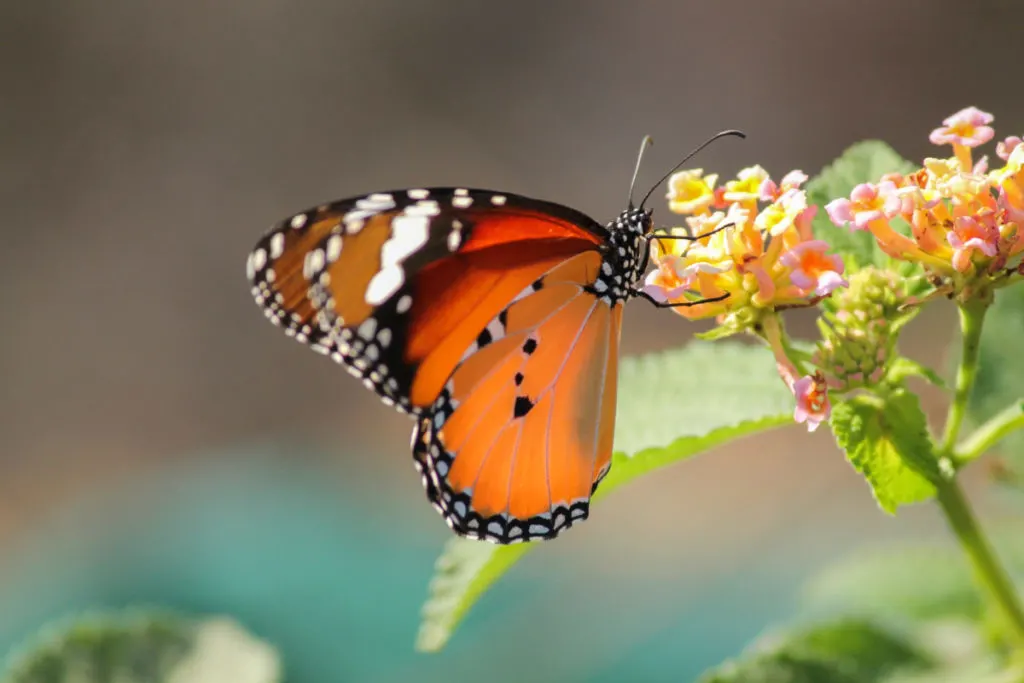
I think the better question is: what aren’t you going to attract with a vast selection of lovely flowers?
And will you recognize them once they arrive?
There are online resources to identify insects aplenty, though it often feels fitting to have something in hand as you make close observations in your garden.
In that case, it’s super handy to have a book or several books on the subject, so you can do your research offline.
Here are some personal recommendations for learning about bees, butterflies and beneficial insects of all kinds:
Bees: An Identification and Native Plant Forage Guide by Heather N. Holm
The Bees in Your Backyard: A Guide to North America’s Bees by Joseph S. Wilson
A Swift Guide to Butterflies of North America: Second Edition by Jeffery Glassburg
The National Audubon Society Field Guide to North American Butterflies
Garden Insects of North America: The Ultimate Guide to Backyard Bugs – Second Edition by Whitney Cranshaw
Good Bug Bad Bug: Who’s Who, What They Do, and How to Manage Them Organically (All you need to know about the insects in your garden) by Jessica Walliser
To attract butterflies, you can also plant ornamental grasses.
When you start to look at your garden visitors as more than just pretty fliers, it dawns on you that attracting butterflies is about more than beauty.
There is also the caterpillar stage of life which is often less glamorous.
Given the thought that butterflies also serve as food to other species such as frogs and lizards, you might come to the realization that you need more than flowers to cater to all stages of life.
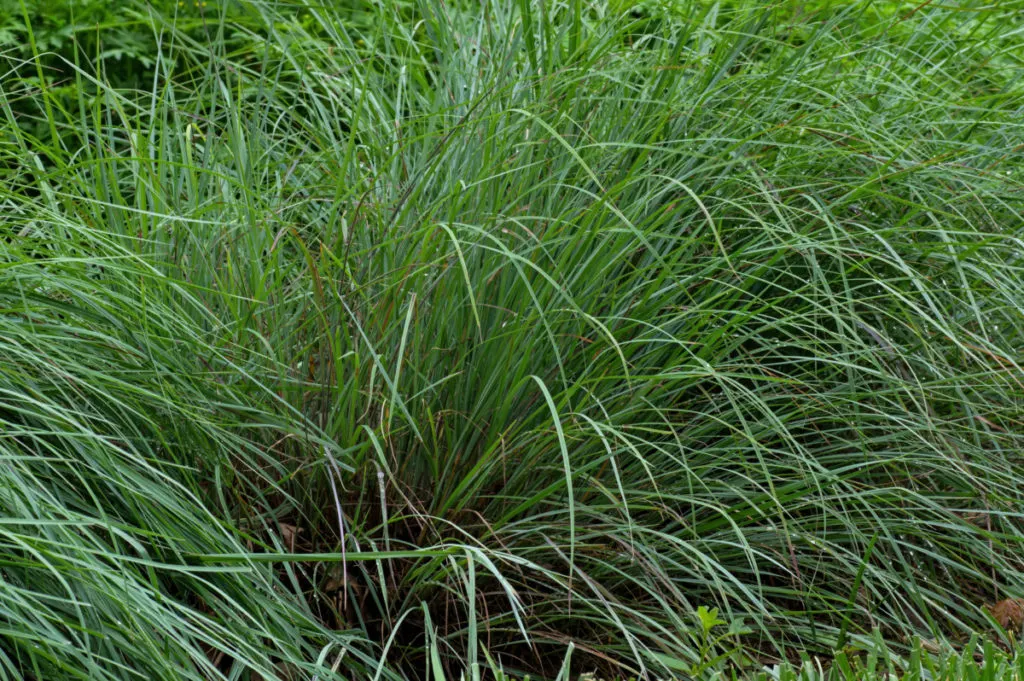
You need nooks and crannies, hiding spaces galore. You need to create a space in which insects, toads and snakes feel safe. Yes, some snakes are good to have in a garden too.
Ornamental grasses can come to your aid, to provide more than a food source for butterflies.
5 Ornamental Grasses For Butterflies
In your garden/landscape you can also plant native grasses:
- Indian grass (Sorghastrum nutans)
- little bluestem (Schizachyrium scoparium)
- prairie dropseed (Sporobolus heterolepis)
- river oats (Chasmanthium latifolium)
- Pennsylvania sedge (Carex pensylvanica)
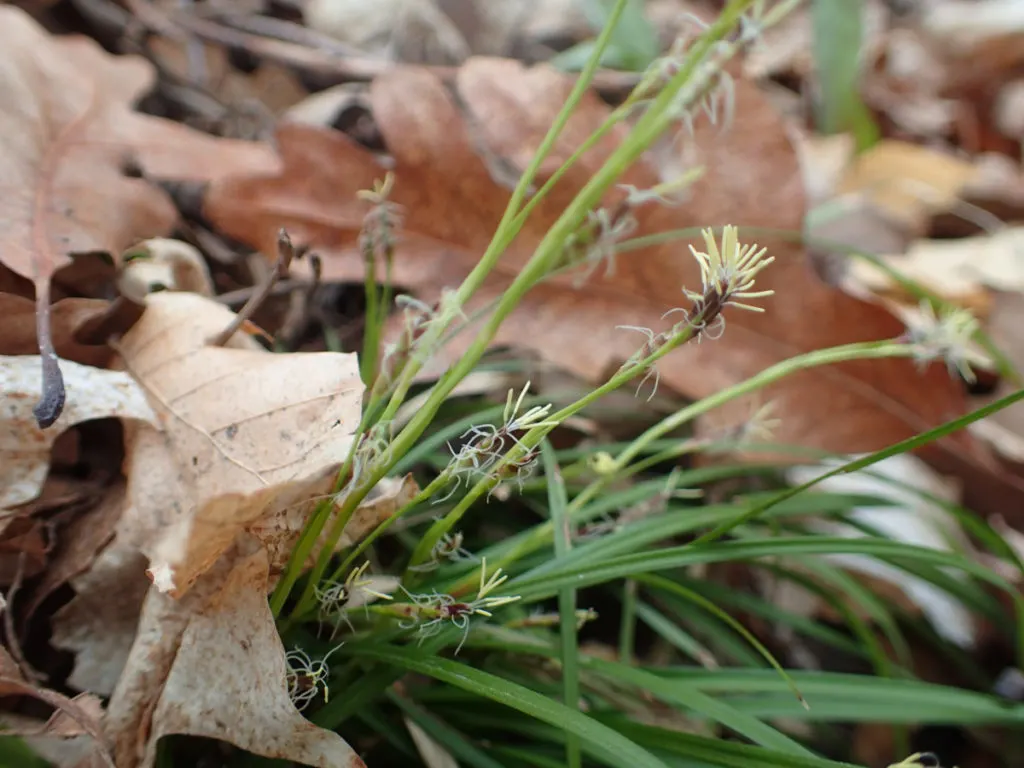
While these grasses and sedges may not become a food source for the butterflies themselves, they act as a diverse habitat in which to host and protect tender species.
The above list of grasses and sedges to attract butterflies is by no means complete. It is up to you to do more research to find out what lush grasses are native to your area.
Let’s move onto more common plants you can tuck into empty spaces of your garden, in the attempt of attracting beneficial insects.
15 Best Plants to Attract Beneficial Insects
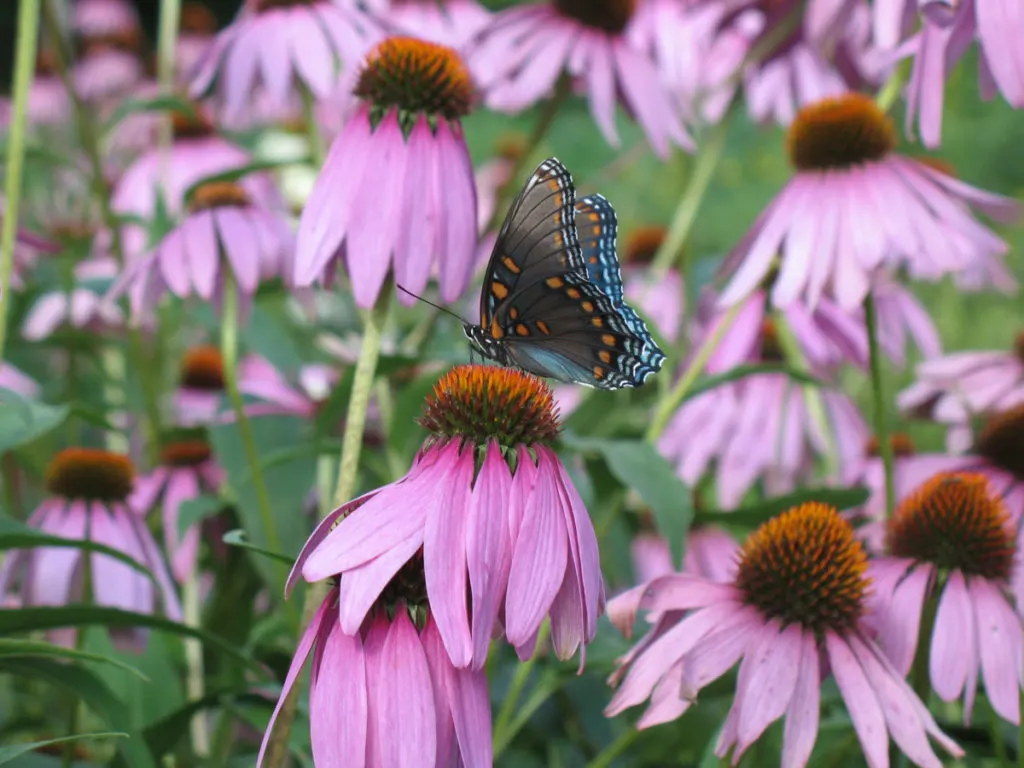
All summer long, insects will be buzzing about.
But, will they be hanging out in your garden, or will they be over at the neighbor’s having a grand old time?
It is all up to you. You get to decide what plants you desire in your garden. In time, they will attract beneficial insects too.
The word that your garden is great will get out when you include some of the following plants in your backyard:
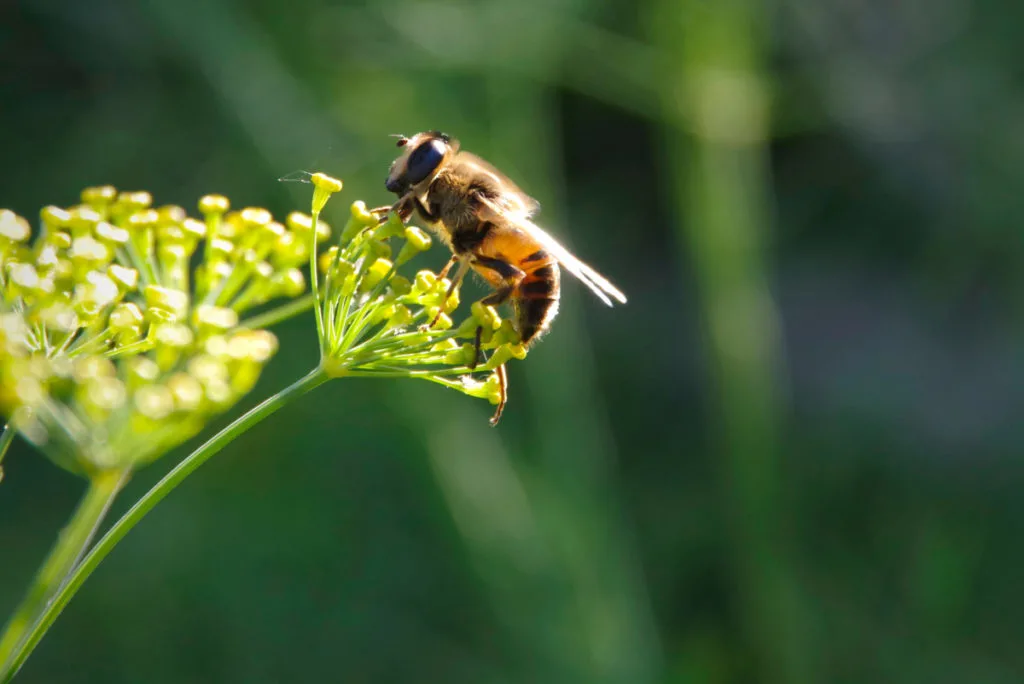
- alfalfa (Medicago sativa)
- angelica (Angelica sp.)
- black-eyed Susans (Rudbeckia hirta)
- buckwheat (Eriogonum sp.)
- caraway (Carum carvi)
- coneflower (Echinacea sp.)
- cosmos (Cosmos bipinnatus)
- dill (Anethum graveolens)
- goldenrod (Solidago sp.)
- Queen Anne’s lace (Daucus carota)
- sunflower (Helianthus annuus)
- sweet alyssum (Lobularia maritima)
- sweet clover (Melilotus sp.)
- tansy (Tanacetum vulgare)
- tickseed (Coreopsis sp.)
- yarrow (Achillea millefolium)
Why is attracting beneficial insects so important?
Consider for a moment that you love to grow tomatoes.
So you plant 50+ plants, to have enough for yourself, for preserving and for feeding your family, friends and neighbors.
Without incorporating companion planting into your garden, what you have is a monoculture. And monocultures are destined to have problems.
In the case of growing tomatoes the hornworm is often regarded as the greatest threat to your upcoming bountiful harvest.
Crop rotation is one way to avoid pesky problems. Planting some attractive plants to discourage infestation is another way to solve a hornworm challenge.
Beneficial Insects to Attract
With the above plants in mind, what kind of beneficial insects do you hope to attract?
Let’s hope you silently answered to yourself: lady beetles, lacewings, parasitic wasps, praying mantises, moths, hoverflies, solitary bees, ground beetles, soldier beetles and stink bugs.
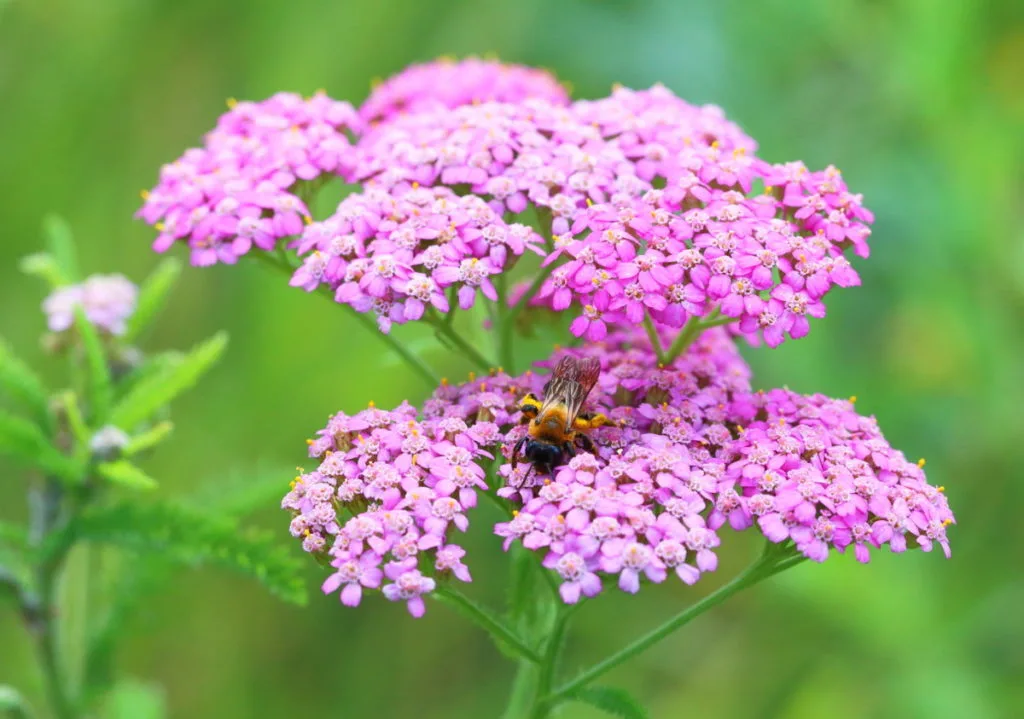
They aren’t all attracted to the same plants, therefore when it comes to planting and tending to your garden – diversity is best.
Some insects prefer carrots, while others are more attracted to dill, feverfew or fennel. Other beneficial insects will tend towards mint, lobelia and rosemary.
You won’t be able to cater to them all, but you can cater to many.
Aim to plant as many perennials and annuals as you can squeeze into your garden, being sure to give each plant its own space to thrive.
Winter Care of Plants that Attract Beneficial Insects
One of the finest ways to care for your garden in winter is to make sure all the beneficial insects have a place to overwinter.
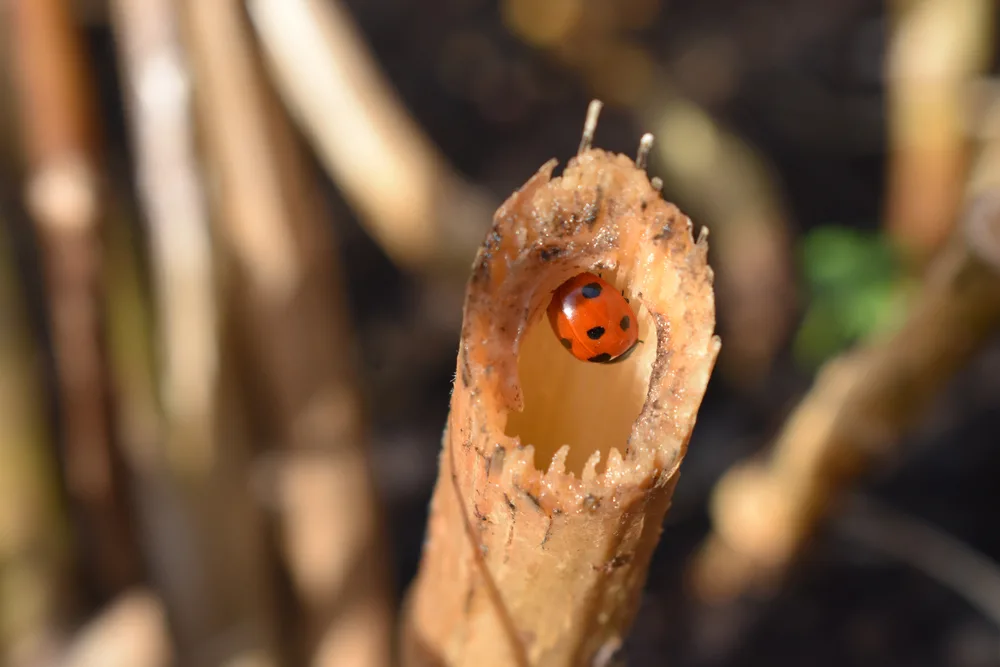
That is, you really don’t have to do anything at all.
In fact, the less you do, the more beneficial insects you will attract.
Sounds counter-intuitive, right? Leave the stems, leave the leaves, leave the groundcovers on the ground. Let wildlife enjoy in your backyard, the kind of environment they would receive in the wild.
Slightly unkept, roughly abandoned and untamed.
That is what nature likes best, if only for a few months out of the year.
How about caring for beneficial insects throughout the summer?
Make sure they have a constant source of water – the shallower the better. A small pot or ceramic bowl is practical for dishing the water out. Simply add small stones or pebbles to the bottom and top it off with water.
Getting Over the Fear of Bugs
Or rather, getting over the fear of the unknown.
Most bugs are harmless, yet a majority of us are brought up in a society that says, “Don’t touch that!” So we don’t.
At the same time, we don’t learn. And then fear sets in. What would happen if you touched an insect with your bare hands?
Would it be slimy, would it bite, would it give you a rash? Not that you should blindly pick up everything that crosses your path, but never let fear get in the way of learning all there is to know about crawling bugs, caterpillars and other flying insects.
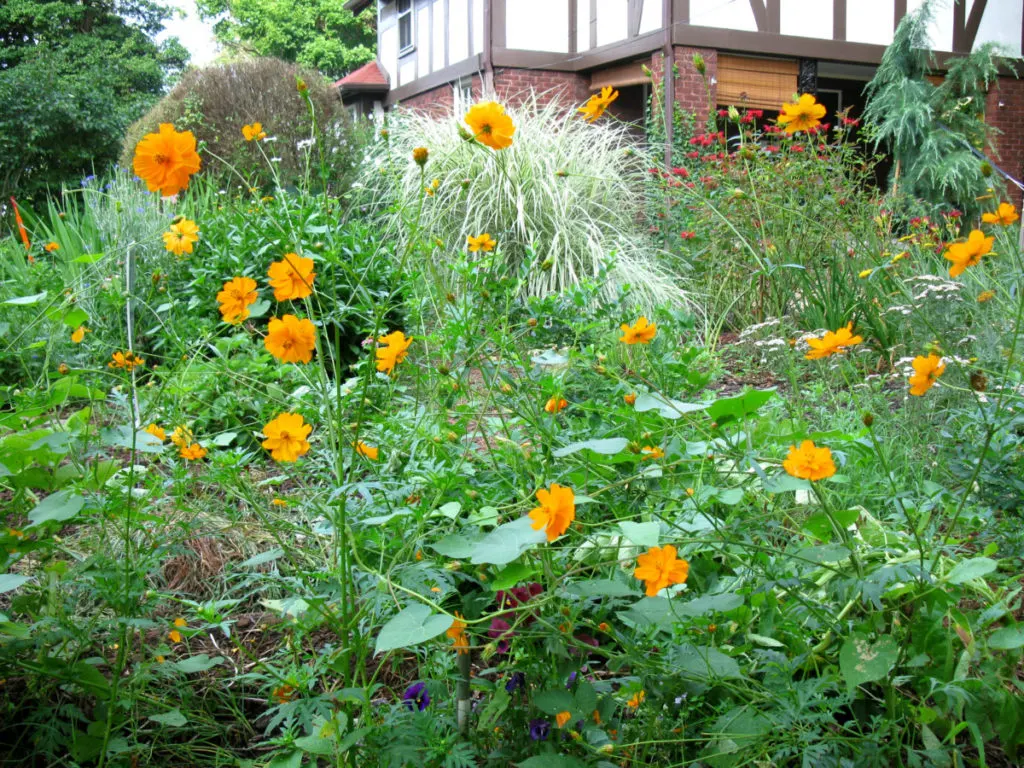
Some insects do sting. Others, like hoverflies, only mimic the appearance of bees and wasps. When they land on you they do no harm. Unless you consider their ticklish tongue as they taste some minerals from your skin offensive.
On the other hand, some types of fuzzy caterpillars can give you a rash just from touching them. So it’s best to leave fuzzy caterpillars where you find them.
Now is the time to learn how to recognize beneficial insects and teach your knowledge to everyone who cares to listen. Children included.
Instead of swatting anything that looks dangerous, take a step back and let them go on their way. If you find spiders in your home, catch them in a container and return them outdoors.
It’s all about intention.
Be kind to nature and it will be kind to you.
So, what are you waiting for?
Make your own list of plants you can grow in your backyard to attract bees, butterflies and beneficial insects, then source the seeds or plant material to get started.

Plant when the weather is right and wait to see the diverse visitors that arrive.
If you don’t have any room for more plants in your garden, why not try building a bug hotel instead?

Get the famous Rural Sprout newsletter delivered to your inbox.
Including Sunday ramblings from our editor, Tracey, as well as “What’s Up Wednesday” our roundup of what’s in season and new article updates and alerts.

